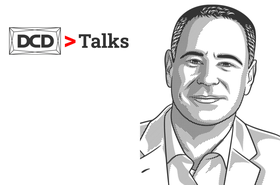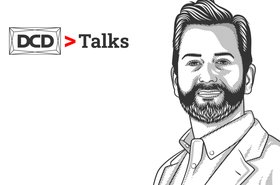In the digital age, it seems remarkable that many critical functions are still achieved by passing documents and spreadsheets between stakeholders and departments – and nowhere is this more apparent than in the construction industry, where a recent study from Turner & Townsend found that only 29 percent of the sector has moved to integrated digital solutions. How can it be that in the bleeding edge of technology, our construction processes are stuck in analog?
We’re in an era where the data center industry is building more and more facilities simultaneously to meet the exponential growth in demand, and each of those buildings is becoming larger in scale and more complex in scope.
More and more feedback data points are being collected, particularly with an eye to ensuring that parties meet their commitments to sustainability. Yet with metrics being kept in PDFs and Word documents, that information is siloed. Successful best practices are lost, and mistakes on one site can easily be replicated on another. To put it another way, we’ve got access to a helicopter, but we’re not flying high enough to see over the top of the maze.
The question we need to ask is, how can construction programs improve their communication and collaboration?
The answer lies, of course, in digital solutions. By adopting a conjoined digital approach to managing data center construction, all stakeholders across multiple sites can see a 360-degree view of the entire process – no more silos, no more waiting for manual collation, and everything is accessible in real-time. The result is a whole, more significant than the sum of its parts, where risk is reduced and quality improved.
By bringing together all this data, we can run side-by-side comparisons of different design prototypes – whether that’s two or twenty, we can see what works best and what is most efficient for the business, its clients, and the road to a carbon-neutral future.
Schneider Electric offers end-to-end solutions for data center providers. When the company acquired RIB Software in 2020, it was in no small part because we understood the synergies between its offering and the possibilities presented by digital transformation in the sector.
RIB has created an ecosystem that lets that aforementioned helicopter soar – making engineering and construction projects more visible, efficient, and sustainable – creating a “single source of truth”.
RIB SpecLink collates all possible metrics surrounding construction projects, enabling stakeholders across multiple locations to collaborate on a single platform. This enables coordinated specifications and brings consistency to working practices.
Now, as sustainability and ESG reporting become increasingly critical, RIB CostX brings a new simplicity to carbon accounting, utilizing BIM & 2D takeoff, allowing multiple carbon estimators to work together and see how changes in design can impact carbon cost in real time.
Combined, SpecLink and CostX create a powerful ecosystem for hyperscale construction, giving unparalleled digital-first management that raises standards and decreases risk. At a time when the entire labor market is struggling to recruit, the efficiencies offered by digital transformation cannot be ignored.
Construction has not necessarily advanced digitally at the same speed as other industries. It is imperative, therefore, that we demonstrate the potential efficiencies and return on investment that digitalization brings, to ensure construction doesn’t become the weak link in the expansion of the data center industry.
By standardizing working practices, we can also consolidate the entire supply chain, down to the fine details, such as making sure every part of the site is using the same light bulbs in the same light fittings. It seems trivial, but when multiplied at a hyperscale level, the bulk purchase of such components and consumables represents huge cost savings.
Change doesn’t only come from within, however, and with myriad standards, regulations, and targets being set at local, regional, and even international levels, digitalization also ensures that every stakeholder has access to the most up-to-date documentation, enabling them to work in compliance with ever-changing requirements in a fast-changing world.
All of which means an end to a culture of long, tedious meetings to align parties involved in the build. Everything is on hand, and updated in real-time – leaving skilled professionals to do what they do best. For business, that means individuals and teams are accountable for their actions, through a fully traceable audit trail, raising standards, rewarding innovation, identifying development needs, and advancing the overall quality of output.
The investment in digitalization is an investment in time, ensuring that projects are completed on spec, on budget, and on time. Along the way, the tangible benefits are manifest, such as fresh perspectives from colleagues who may be working on the other side of the world bringing innovative new approaches to solving problems, and together, we advance.
Schneider has already seen amazing results for customers using RIB SpecLink and RIB CostX, and as needs evolve, so will its product offering, with updated software builds pushed straight to devices, reducing the headache of deployment. Together, the RIB platform offers a holistic approach to data center design and build, sharing success and preventing error, all in a fraction of the time.
RIB’s mission statement is clear – ‘to make engineering and construction more efficient and sustainable’. The data center industry should always lead from the front. We represent the future, and it’s up to us to bring the future to all facets of our process. If we aren’t leading the charge to modernize, who will?
To find out more about RIB software, please visit www.rib-software.com.
More from Schneider Electric
-

DCD>Talks Sustainability Metrics with Rob Bunger, program director of the CTO office, Schneider Electric
In this DCD>Talk we discuss how Schneider Electric approaches sustainability metrics with program director of the CTO office Rob Bunger
-

Sponsored Leveraging DCIM to drive decarbonization
Ramping up decarbonization efforts in the colocation data center through the utilization of DCIM
-

DCD>Talks demystifying Scope 3 with Adam Compton, Schneider Electric
DCD's Dan Loosemore and Schneider's Adam Compton sit down to discuss the approaches to Scope 3 emissions

